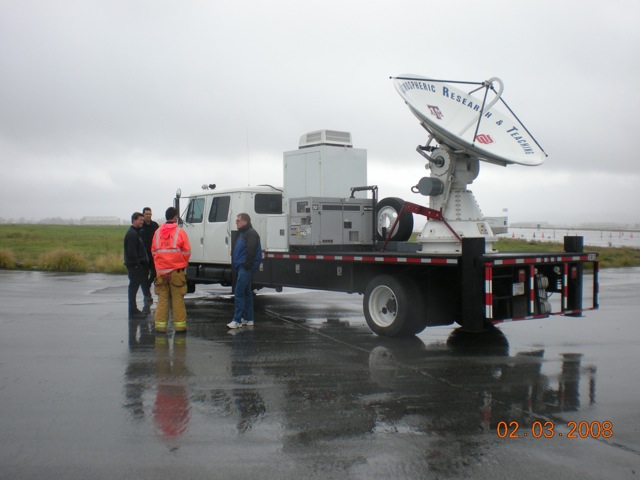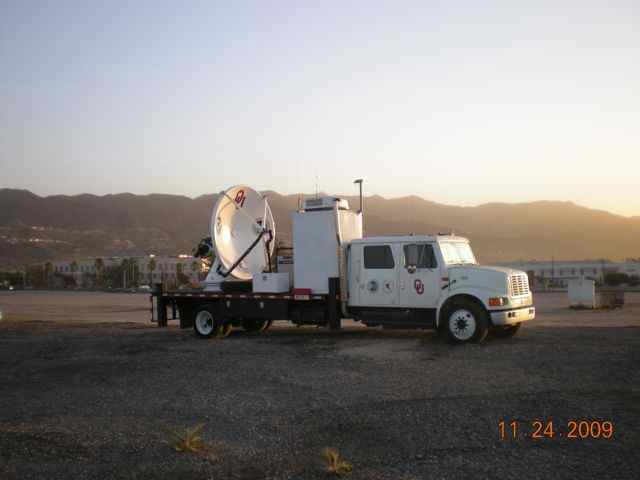The “Canyon Fire” has been chosen as the 2007-2008 USGS Debris Flow Project region for intensive research measurements. NSSL’s Shared Mobile Atmospheric and Teaching Radar (SMART-R) crew will participate for the third year by providing high-resolution rainfall measurements.
The USGS/NOAA Demonstration Flash-Flood and Debris Flow Early Warning System project is focused on helping forecasters improve flash flood and debris flow warnings in areas damaged by wildfires. These areas, known as burn scars, are particularly susceptible to flash floods and debris flows during rainstorms. Rainfall that is normally absorbed by vegetation can run off almost instantly, causing creeks and drainage areas to flood much earlier and with higher magnitude than normal.
The Canyon Fire was a 4565-acre wildfire that started on October 21, 2007 in a canyon above Malibu, CA. The USGS is currently conducting aerial Lidar surveys of the canyon to determine precise slopes and will instrument the canyon with sensors to measure runoff and infiltration. The SMART-R will be sited nearby to provide high-resolution rainfall measurements during the upcoming rain season, December 1-February 28 2008. To more effectively utilize the SMART-R in warning decisions by the NWS (the local WSR-88D radars have very poor coverage of this region), an upgraded satellite internet capability is being installed on the SMART-R. This system will allow the uploading of 5-minute radar base scan imagery to a web site that can be viewed by the NWS forecasters at the National Weather Service Forecast Office at Oxnard, CA.
Background: NOAA and the United States Geological Survey (USGS) established the demonstration flash-flood and debris-flow early-warning system for recently burned areas in southern California in 2005. This is the third year of the project.
Outcome: Results of the project will improve the ability of NOAA’s frontline offices together with the USGS to issue debris flow outlooks, watches and warnings to better serve society’s need for weather and water information and protect lives and property.


